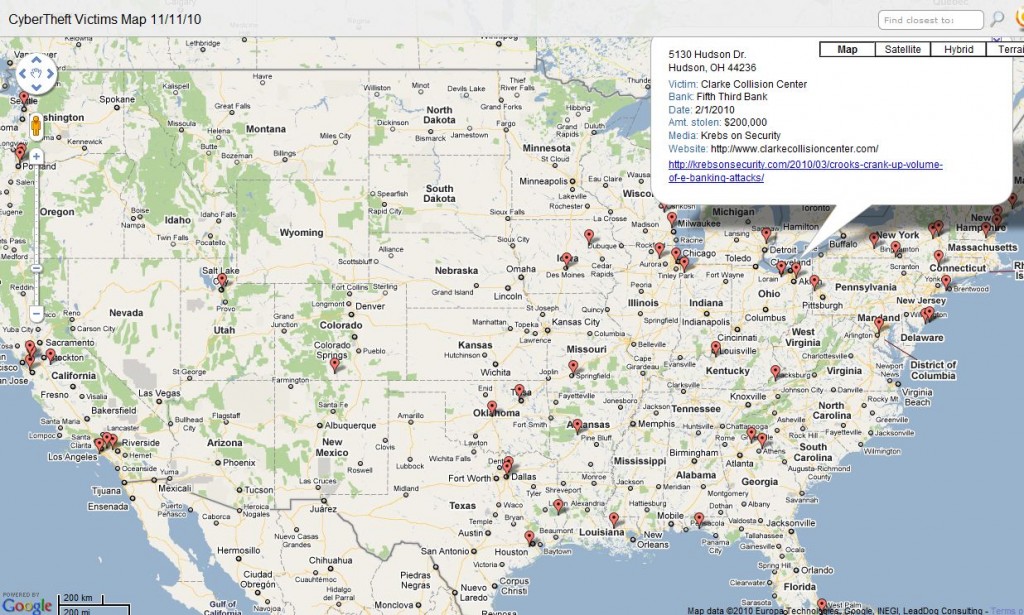Several readers have asked to be notified if the U.S. map showing recent victims of high-dollar online banking thefts was updated. Below is a (non-interactive) screen shot of the updated, interactive map that lives here. Click the red markers to see more detail about the victim at that location, including a link to a story about the attack.
© Krebs on Security - Mastodon





Is “high-dollar” the important distinction here?
Given the sheer quantity of American PCs hijacked by botnets, and the fact that many botnets were designed to loot online bank accounts, it makes me wonder about small dollar thefts. It’s got to be prevalent, but I don’t hear about it often. Is that because it doesn’t actually happen a lot (hard to believe) or that banks don’t report it and eat losses quietly before customers even become aware of the theft (also difficult to believe).
There’s got to be something I’m missing. Can someone shed some light on this issue?
The eBanking carnage map only shows the tip of the iceberg.
Many thefts go unreported for several reasons: they are not discovered; they are discovered and settled by the bank; they are discovered and settled by insurance; they are settled with a confidentiality agreement; victims, banks, and insurers don’t see any reason to notify the media; or the media ignore this topic because it isn’t news about Sarah Palin.
Charting the Carnage from eBanking Fraud II
Well lets put it this way , I’m sure Brian would agree on this . If he had the complete list of who was boosted from these PARASITES , the map it self would look like one big red marker .
Run with that idea from the opposite side. Show where the wire transfers go to. Watch the Ukraine and other places light up and draw some conclusions that way. Even though Mr. Krebs has cautioned us that they use mules over there to further firewall their operations, it might be telling to see if they wind up getting grouped around the same Western Unions and blind eyes.